Why are my brakes "poor"?
They aren't! Everyone is now used to driving cars with servo (power) assisted brakes which means you dont have to press the pedel very hard to make the brakes work hard. To save weight and to increase the 'feel' of the brakes (i.e. you can 'feel' how much braking force you are applying) the Elise doesn't have servo assist. So you have to press the pedel relatively hard to get a response, which some people misinterpret as poor brakes. You just have to get used to pressing harder! Try stamping on the brakes and see if you can lock the wheels. If you can, then your brakes have more than enough ability. Next time you need to stop suddenly only press it 99% so they don't quite lock and that is your maximum braking potential.
Which pads should I get?
This depends on what you use your car for? Just road use or track? First thing to check. Does your car have the MMC pads/discs on it or steel discs? (Check this out by placing a magnet on the disc, if it sticks you have steel discs, if it doesnt you have MMC's). If you have MMC's then you can either try and source some more MMC pads or swap to stainless steel discs and new pads. See further down this list for the options.
Discs
Eliseparts
Aluminium Belled, Drilled & Grooved Discs

Advantages
- 1
- 2
- 3
Disadvantages
- 1
- 2
- 3
EBC Plain
Advantages
- 1 Cheap
- 2 Reasonable replacement for OEM steel discs
- 3
Disadvantages
- 1
- 2
- 3
EBC Turbo Groove

Advantages
- 1 Relatively cheap (£153 per pair www.eliseparts.com- Nov 2007)
- 2 Look sexier than plain
- 3 Perfectly good for road or track use
Disadvantages
- 1
- 2
- 3
Real life facts
Fronts went from 25.7mm to 25.22mm (0.48mm loss) after 10,000 miles including 6 track days with Mintex 1144 pads. One day at Oulton with Greenstuff pads lost only 0.01mm
Lotus Standard MMC
Metal Matrix Composite
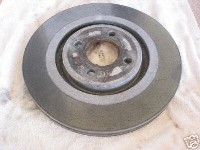
Advantages
- 1 Lightweight
- 2
- 3
Disadvantages
- 1
- 2
- 3
Pads
Below are a few of the choices for Brake Pads for your Elise with a brief descrption of the advantages/disadvantages.
EBC
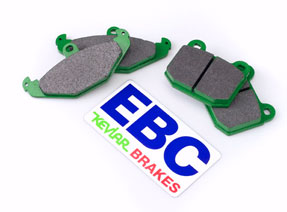
EBC Greenstuff
Advantages
- 1 Cheap (£93 www.eliseparts.com)
- 2 Perfectly good on road or track if you don't mind people slagging them off for no good reason
- 3
Disadvantages
- 1 Poor initial bite, particularly when cold.
- 2 Users often report a 'spongey' feel
- 3 Supposedly wear quickly under heavy use but see actual figures below
- 4 Unfashionable
Real life facts
Actual wear rates experienced (s2 135s) by each of the 4 front pads on a hard track day (204 miles, 73 laps) at Oulton Park:
Right outer 0.31mm
Right inner 0.50mm
Left inner 1.16mm (maybe this piston is sticking a bit?)
Left outer 0.39mm
MMC
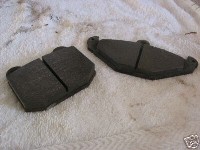
MMC
Advantages
- 1
- 2
- 3
Disadvantages
- 1
- 2
- 3
Pagid
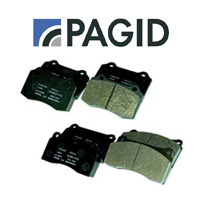
Pagid RS14
Advantages
- 1 Best pads you can buy if you use the car on track?
- 2
- 3
Disadvantages
- 1 Expensive
- 2 Take the first application of the brakes to warm up
- 3
Pagid RS15
Advantages
- 1
- 2
- 3
Disadvantages
- 1
- 2
- 3
Pagid RS4-2
Advantages
- 1
- 2
- 3
Disadvantages
- 1
- 2
- 3
Mintex
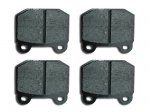
Mintex 1144
Advantages
- 1 Relatively cheap (£115 - www.eliseparts.com)
- 2 Perfectly good on road or track
- 3
Disadvantages
- 1
- 2
- 3
Real life facts
A set of fronts lasted 10,700 miles including 5 track days. Rears still had ?5mm left after 11,000 miles
Fluid
Best Fluid etc...
Do I need to bleed the clutch at the same time as the brakes?
It should be OK, because the resevoir is drained well above the clutch line and therefore will NOT introduce any air into the line itself. However, seeing as you've pretty much renewed the fluid everywhere else and have the bleeder out you might as well bleed the clutch at the same time.
Stainless steel brake hoses
Standard issue brake lines are rubber with external wire reinforcement. Whilst adequate for normal road use, these can be improved by replacing them with fully braided lines. Braided lines expand less under pressure due to the improved reinforcement - therefore the pressure in the line is more linear with pedal application and in extreme cases the maximum pressure exerted on the pad can be increased.
Replacing Hoses
Replacing hoses is similar to other cars. The items most worthy of note are that smaller P-clips will be required to restrain the hoses and that care needs to be taken to ensure adequate hose length at the extremes of suspension and steering movement. When complete, a check should also be made to ensure the hoses do not rub against the inside of the wheel. After completing these checks the system will require bleeding. Once bled, the system should be checked throughly for any signs of leakage. If there is any doubt about the installation then a qualified technician should be consulted.
Older Series 1's do not have the slots in the windscreen mount that the later cars have. These slots enable much easier access to the locknuts and union fittings of the front lines. Most people replacing the hoses add these slots (the mounts are only GRP and therefore easy to cut, particularly with a Dremel or similar).
<a name="What_is_the_minimum_brake_disc_thickness.3F" id="What_is_the_minimum_brake_disc_thickness.3F">
What is the minimum brake disc thickness?
The manual says new they are 26.0mm and the service minimum is 24.9mm.
Depends really what you want or need from the brakes, I'd say. The MOT test is all about effiency and minimum strength - going under the rec level will not mean a failed test, so long as the brakes work well ( which they will ).
So if you use the Elise as a holiday car, mainly on public roads and not out and out racing, you will probably have the same discs for a long time.
If you want to keep them at the pinnacle of performance, then stick to the guidelines.
Brake Replacement Parts
Rear caliper is off a Renault Laguna and you cant refurb it - only the slider bit - the good news is that the boots are in the refurb kit though
The Lotus part number is A082J6162S and is a bit expensive .. whereas the Renault part number is 77 01 205 496 and is about half price.







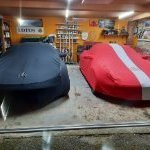


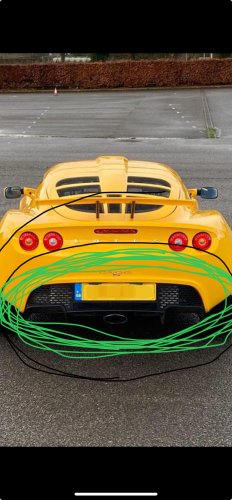
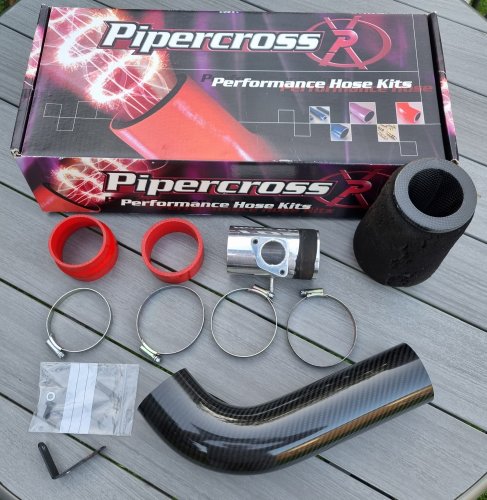




Recommended Comments
There are no comments to display.
Join the conversation
You can post now and register later. If you have an account, sign in now to post with your account.